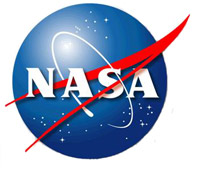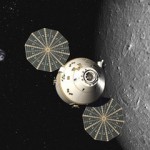 I am on record as saying that I think that the Constellation rocket program should be axed, and replaced with a system that is more cost-effective and less likely to run overbudget as Constellation has. President Obama’s speech recently made it clear that Constellation’s days are numbered, and that he is urging NASA to look into a better heavy-lift vehicle.
I am on record as saying that I think that the Constellation rocket program should be axed, and replaced with a system that is more cost-effective and less likely to run overbudget as Constellation has. President Obama’s speech recently made it clear that Constellation’s days are numbered, and that he is urging NASA to look into a better heavy-lift vehicle.
Not everyone agrees, of course. Jeff Hanley – the manager of the Constellation Program – has apparently sent out an email that is an attempt to save at least part of the current system. I have not seen this email, but it’s alleged to try to use Obama’s idea of continuing with the Orion space capsule concept to save even more of Constellation.
 Obama wants NASA to keep developing the Orion capsule as a lifeboat for the space station (and, I assume, a crew capsule for future deep space missions). Of course, to test such a capsule it has to be lofted to orbit. How do you do that? This is where Hanley’s email comes in: the best way to get Orion into space is aboard the Ares 1 rocket, the first such vehicle to be built under Constellation.
Obama wants NASA to keep developing the Orion capsule as a lifeboat for the space station (and, I assume, a crew capsule for future deep space missions). Of course, to test such a capsule it has to be lofted to orbit. How do you do that? This is where Hanley’s email comes in: the best way to get Orion into space is aboard the Ares 1 rocket, the first such vehicle to be built under Constellation.
As schemes go, that’s pretty clever. Hanley is leveraging Ares – which will be canceled under Obama’s plan – using Orion. In other words, the Ares 1 rockets will have to continue to be developed and built if we are to get Orion up and running. That way, even if Constellation is canceled, at least part of it will live on.
 It may be clever, but is it wise? I’m not sure. The Ares 1 has been tested once, and a lot of folks outside of NASA took a very dim view of it… Buzz Aldrin essentially called it a fraud, saying it was nothing more than a dog-and-pony show by NASA to make it look like progress was being made, when in reality it was a failure. That doesn’t make me hopeful that Ares 1 is what we want to throw our support behind.
It may be clever, but is it wise? I’m not sure. The Ares 1 has been tested once, and a lot of folks outside of NASA took a very dim view of it… Buzz Aldrin essentially called it a fraud, saying it was nothing more than a dog-and-pony show by NASA to make it look like progress was being made, when in reality it was a failure. That doesn’t make me hopeful that Ares 1 is what we want to throw our support behind.
I’ve been pretty clear on this: Constellation is basically a good idea, but is off to such a rocky start that it may be best to stop throwing money at it. NASA needs to do these things, in this order:
1) Figure out what its Next Giant Leap is – asteroid rendezvous, Moon base, mission to Mars;
2) Figure out just what is needed to not only accomplish this goal, but to sustain it with an eye toward the next big goal;
3) Start cutting metal.
The problem, as usual, is in Step 2. Sure, that first step (ironically) is sometimes fuzzy and vague, but Obama laid out at least a place to start in his speech last month (even if I disagree strongly with him about the Moon). But politics, public relations, whatever – NASA always stumbles (with plenty of help from Congress) at that dreaded Step 2, drawing up plans that seem to over-reach and not be realistic in terms of budget, goals, and timelines. That’s why we have the Shuttle, the space station, and no future plans.
Before I get the usual anti-Obama comments, remember that it was the Bush Administration that called for the retiring of the Shuttle before we had a working follow-up vehicle. So no matter what we have to rely on other countries and private industry until we get that next-gen rocket. But what happens next is perhaps the most critical thing NASA has ever done since the Apollo program was first announced. Political maneuvering and white-elephant saving are the last thing NASA needs.
What NASA needs is a clear goal, a clear vision, and a clear way to make those happen.